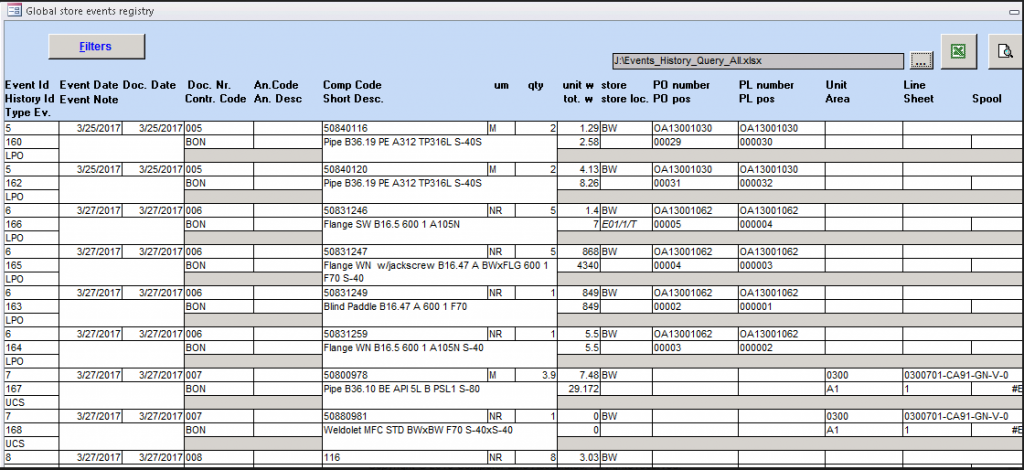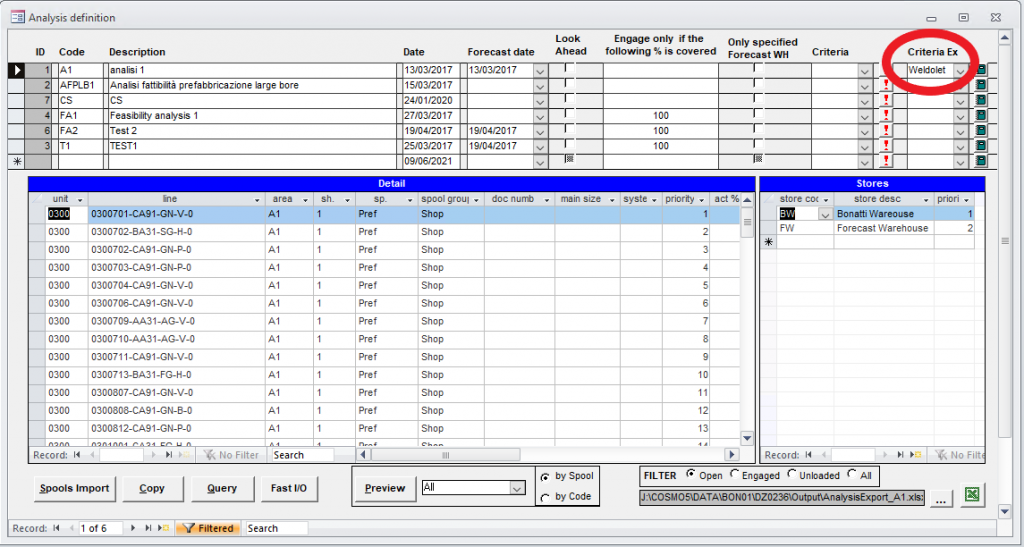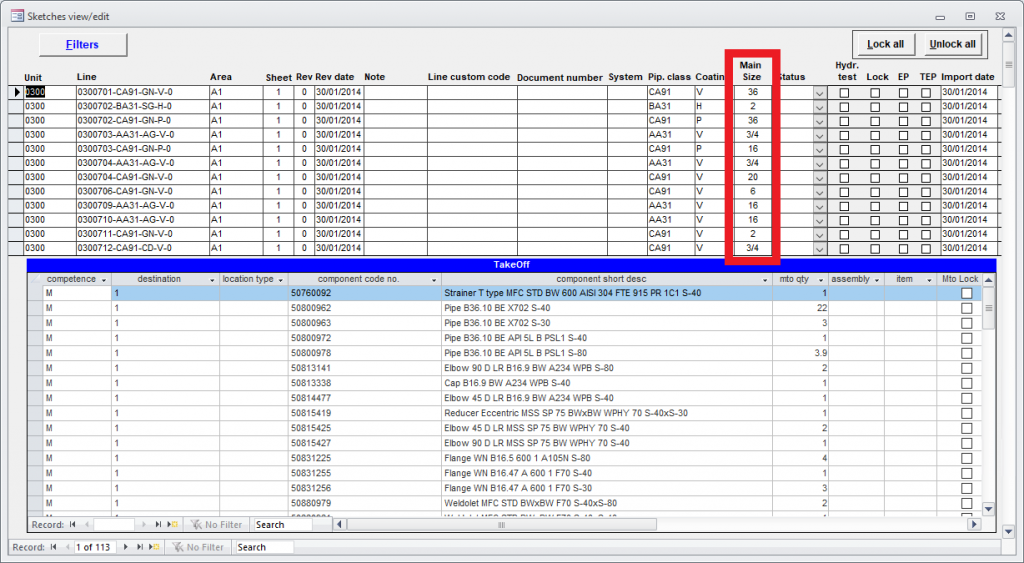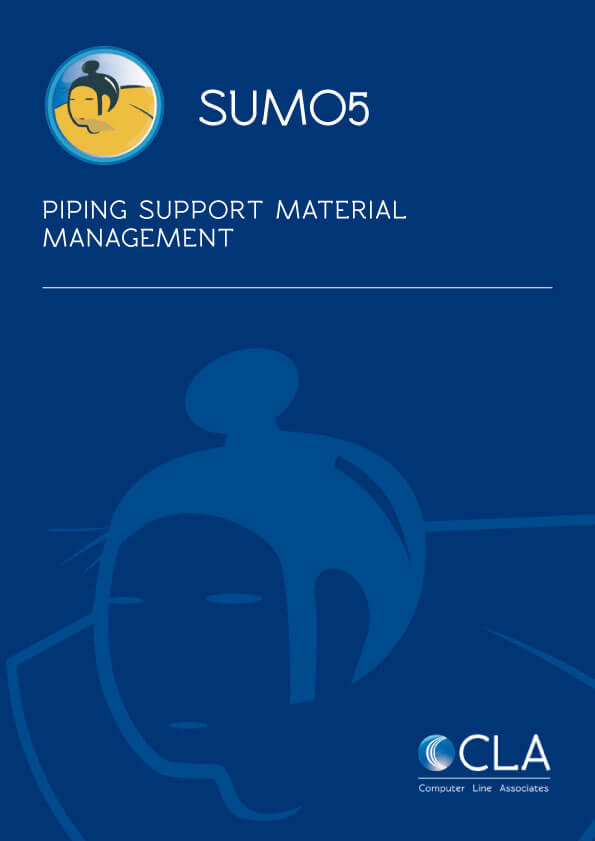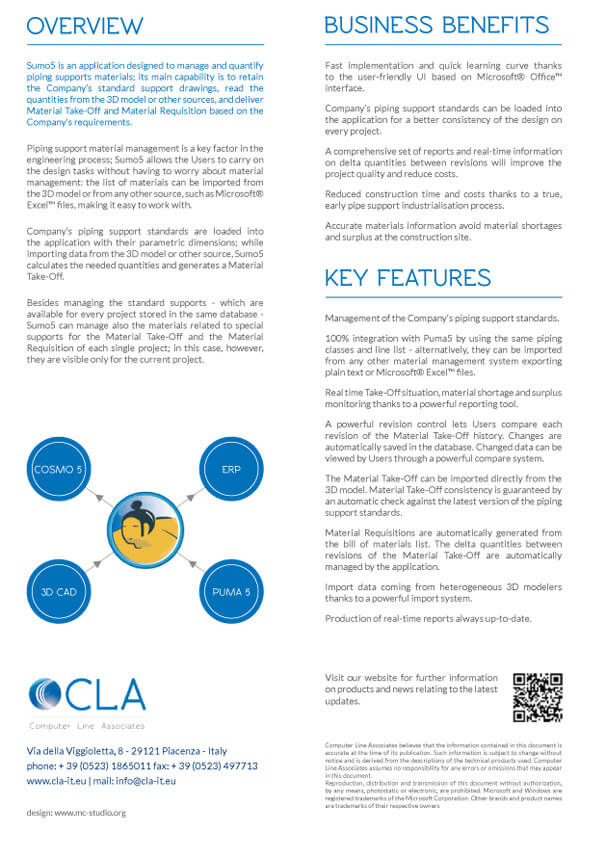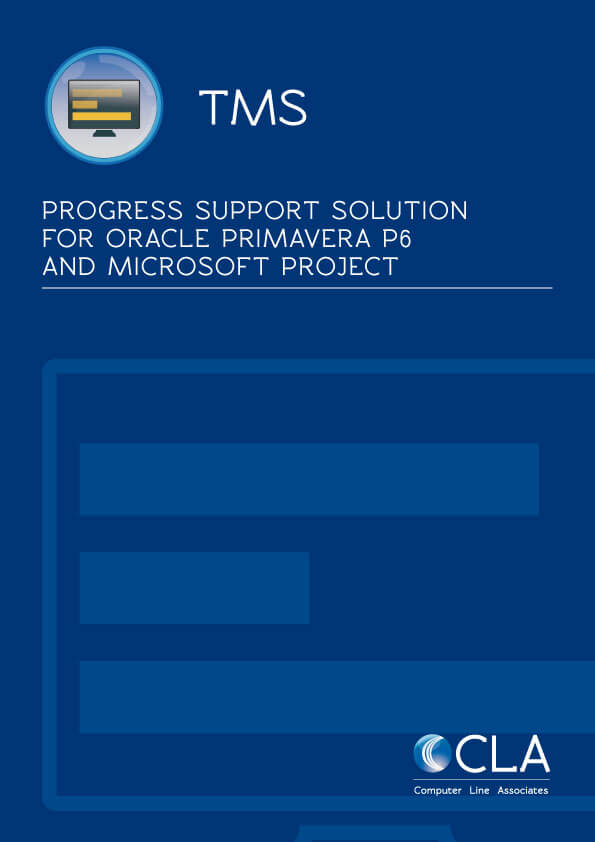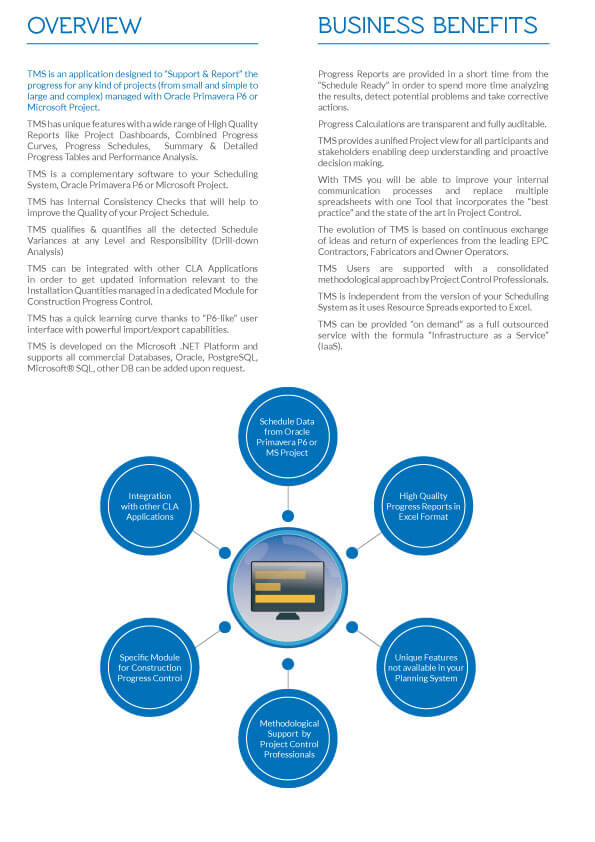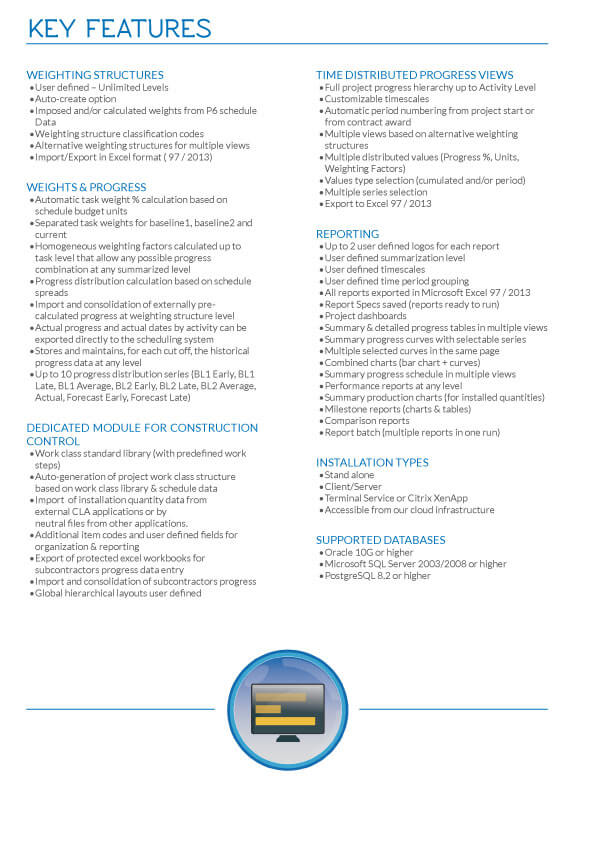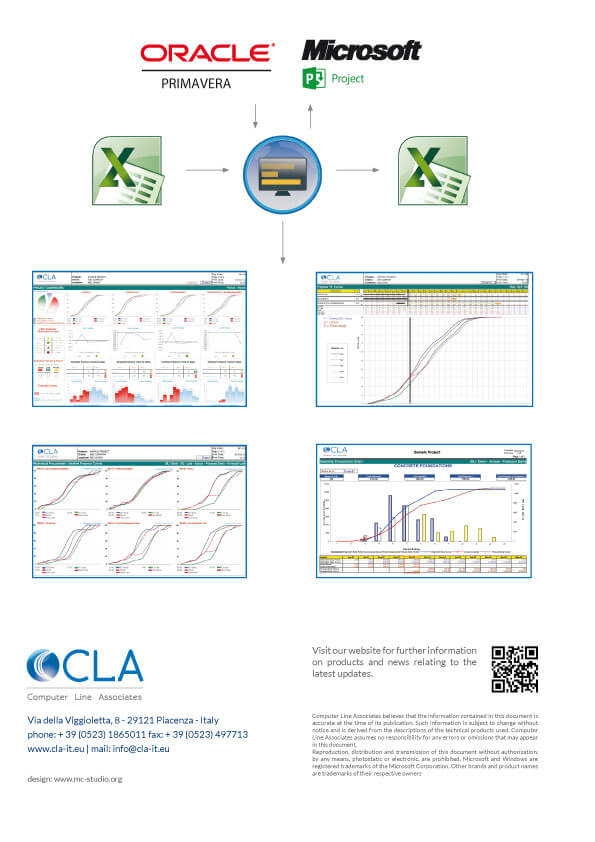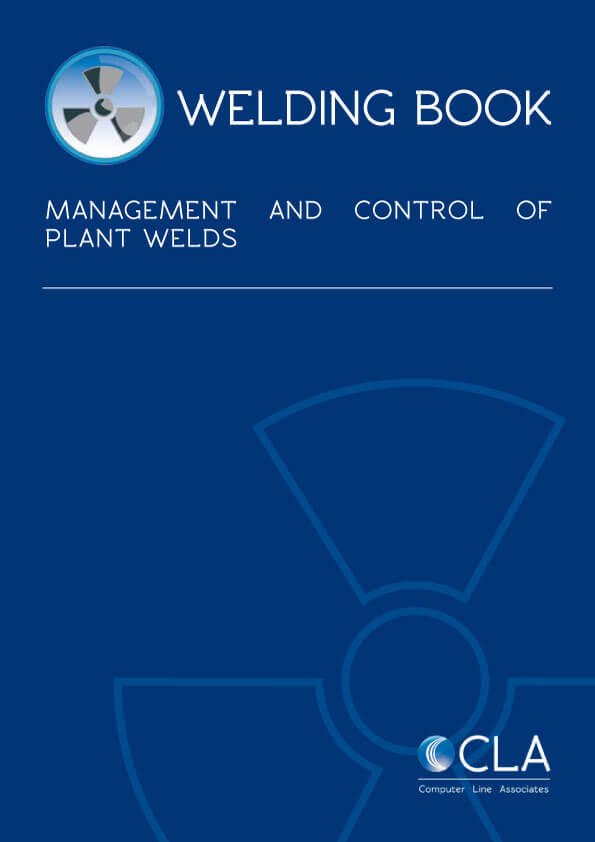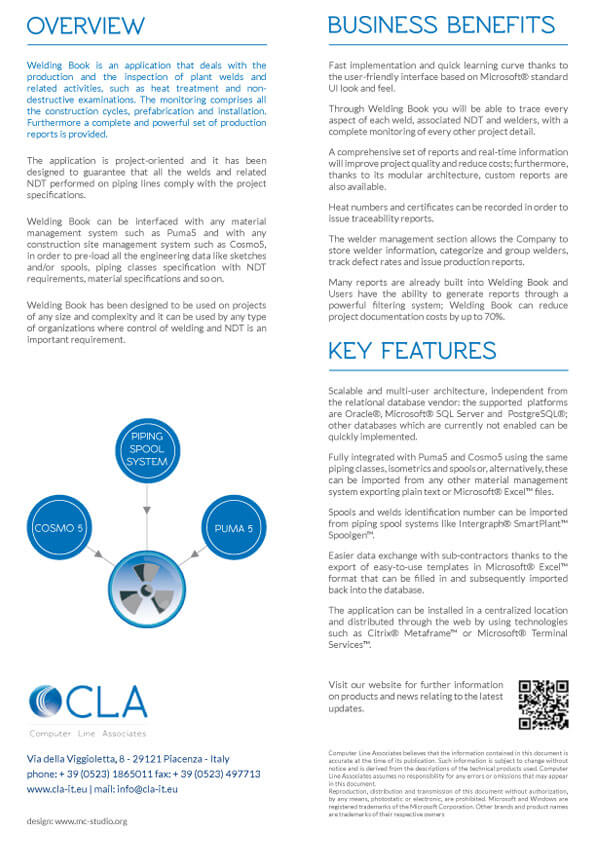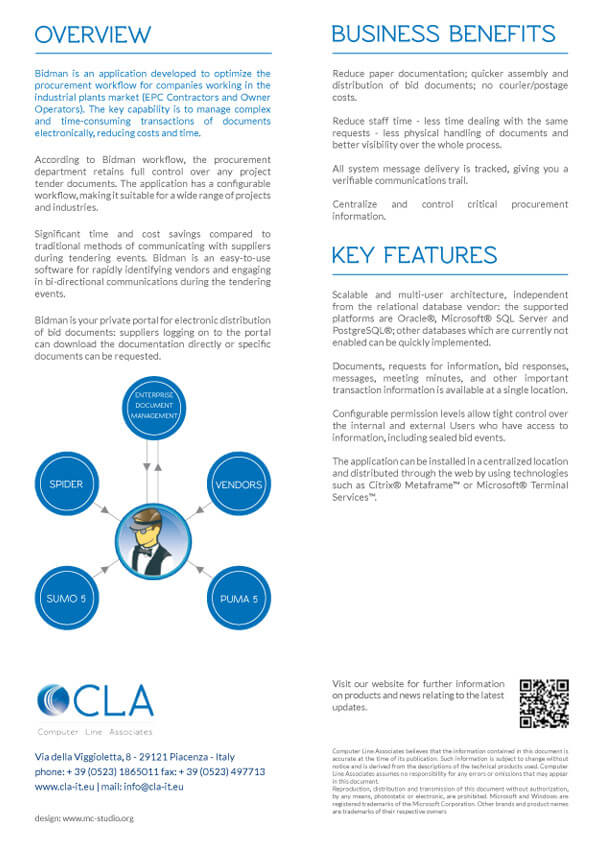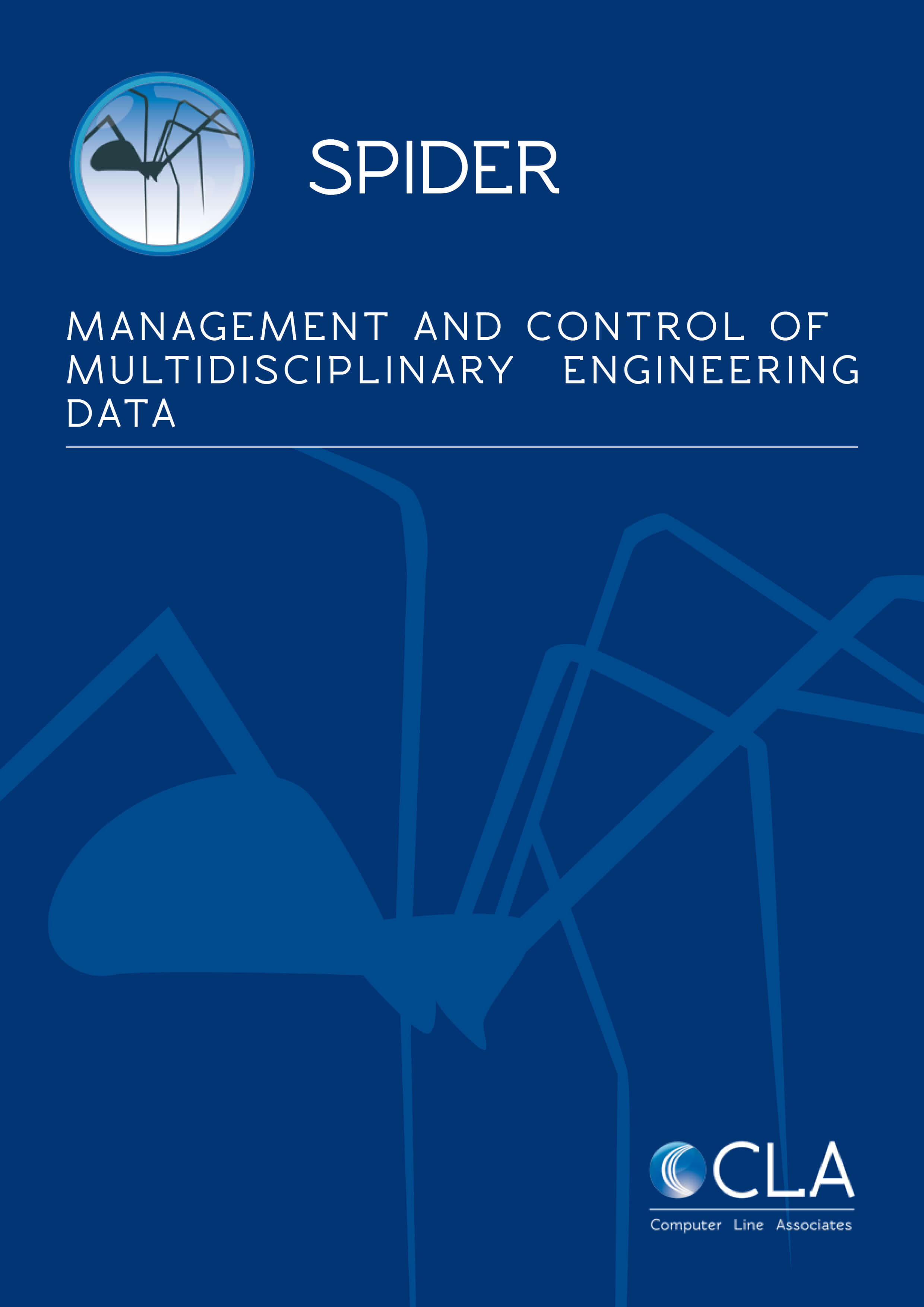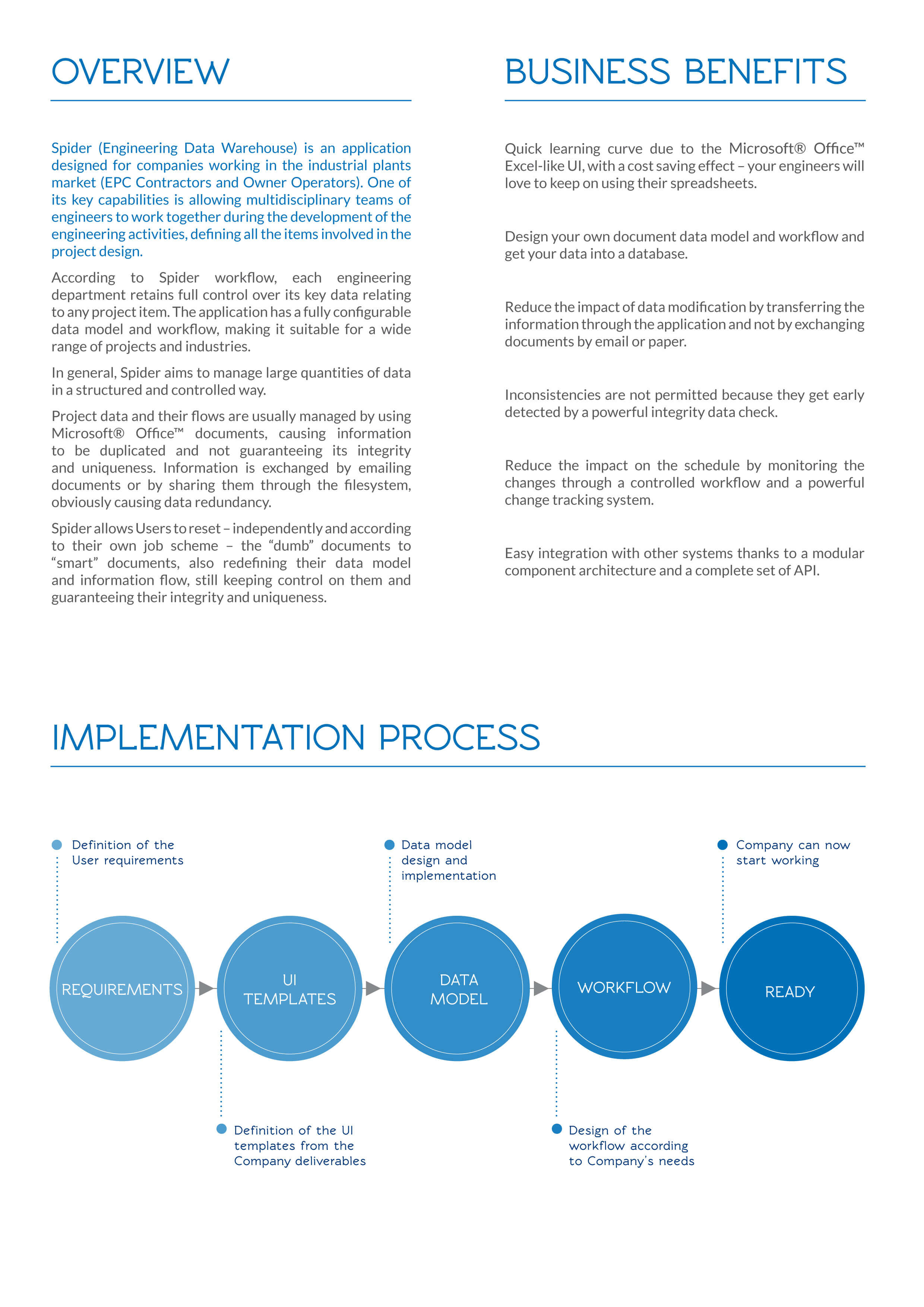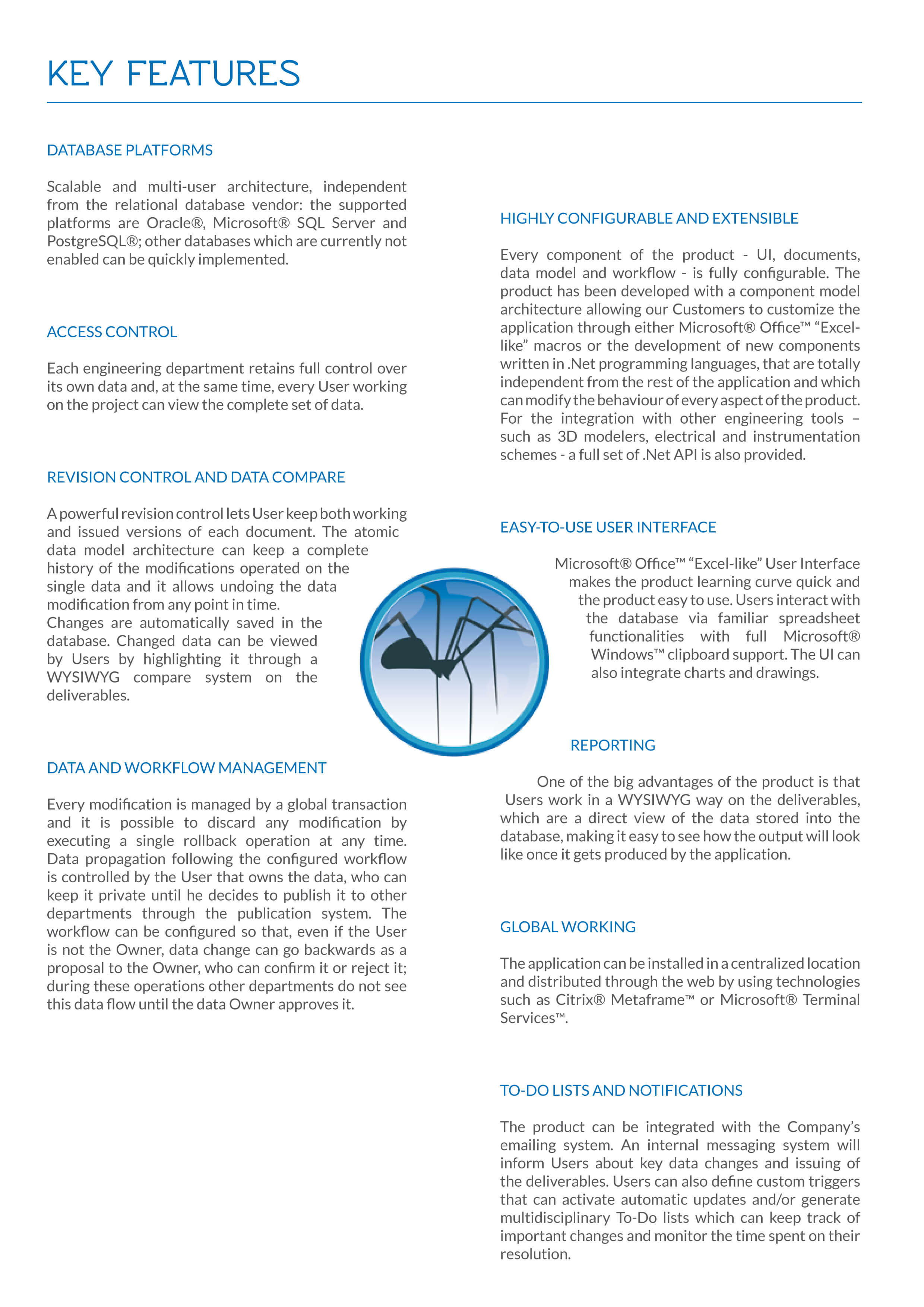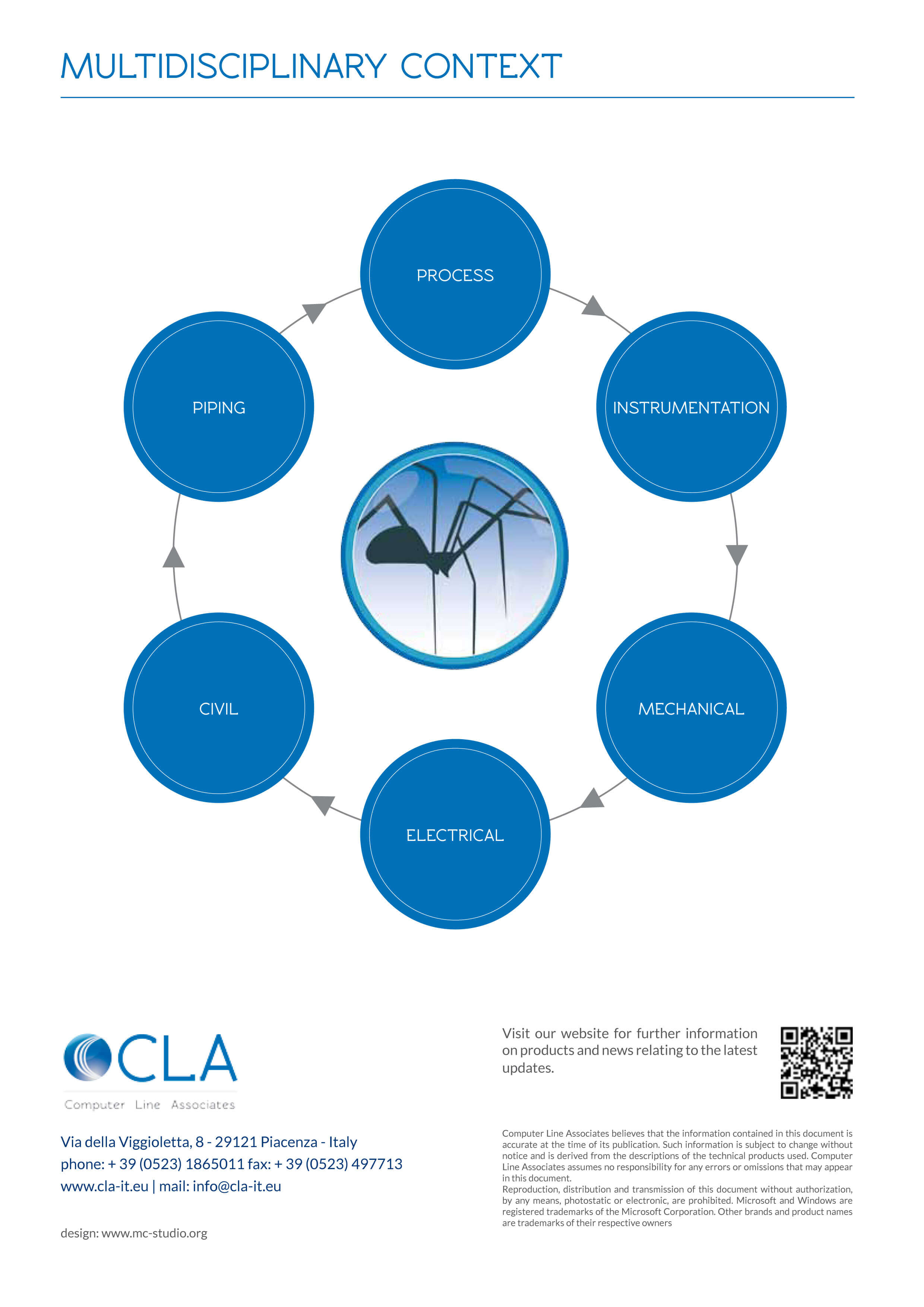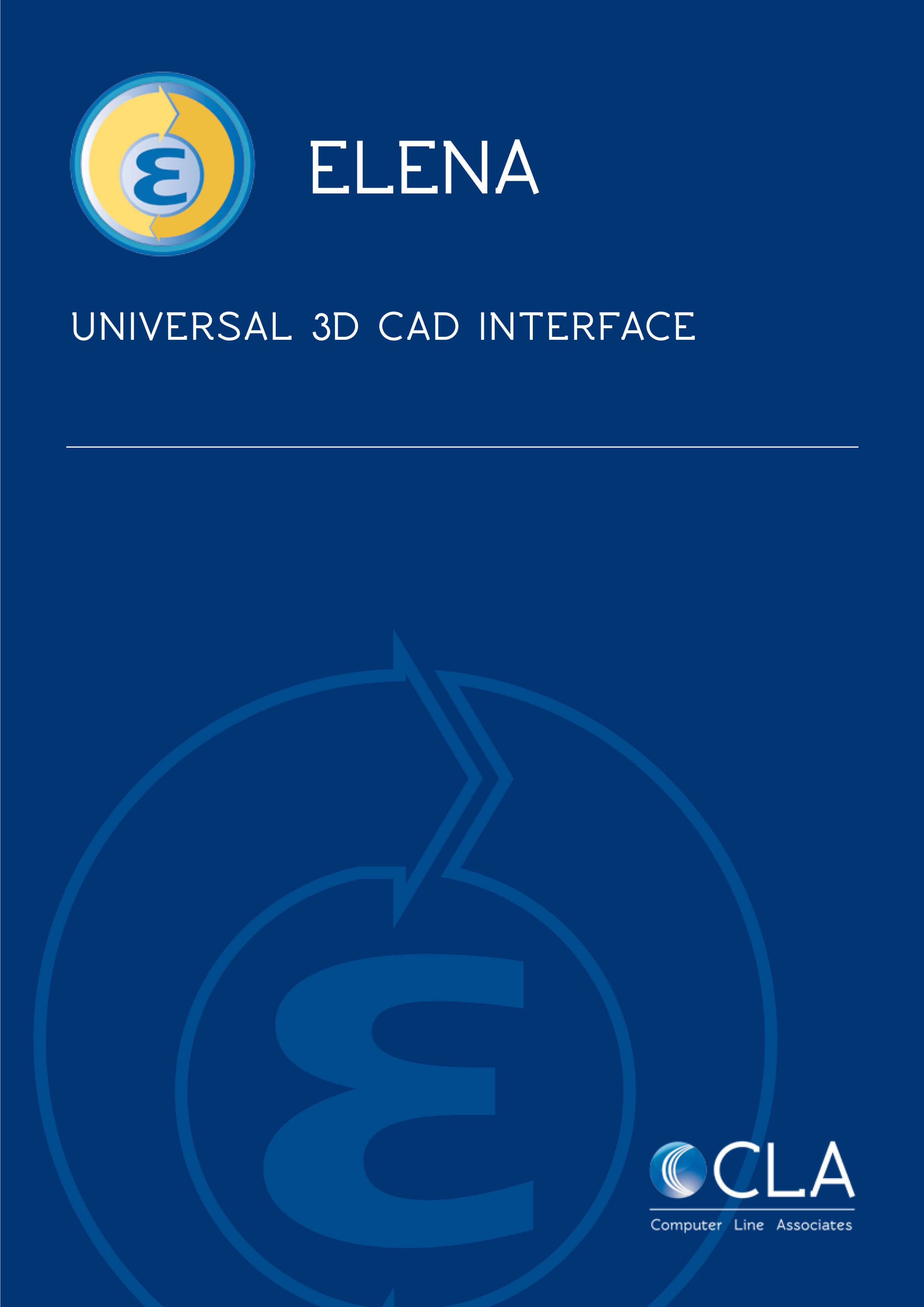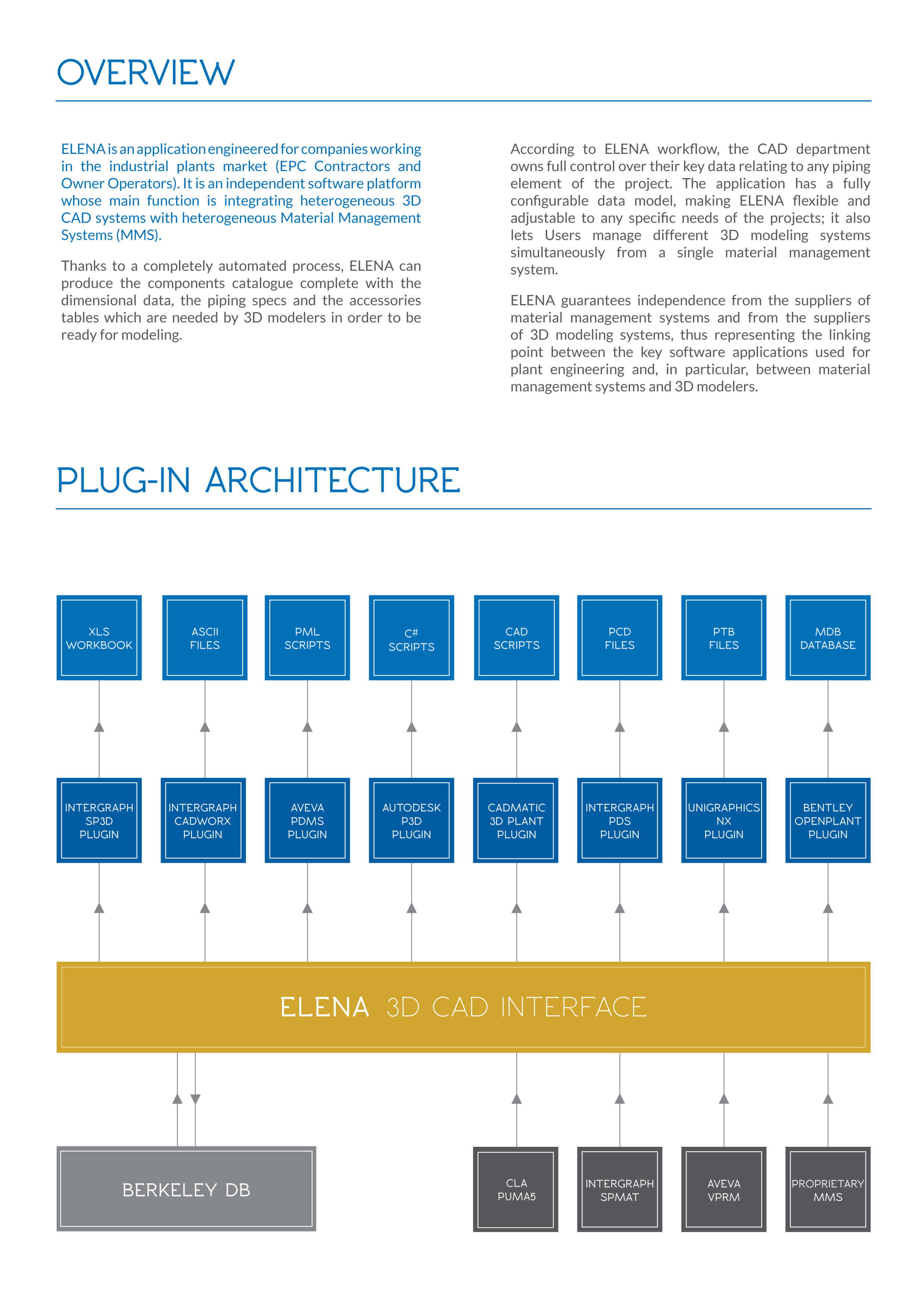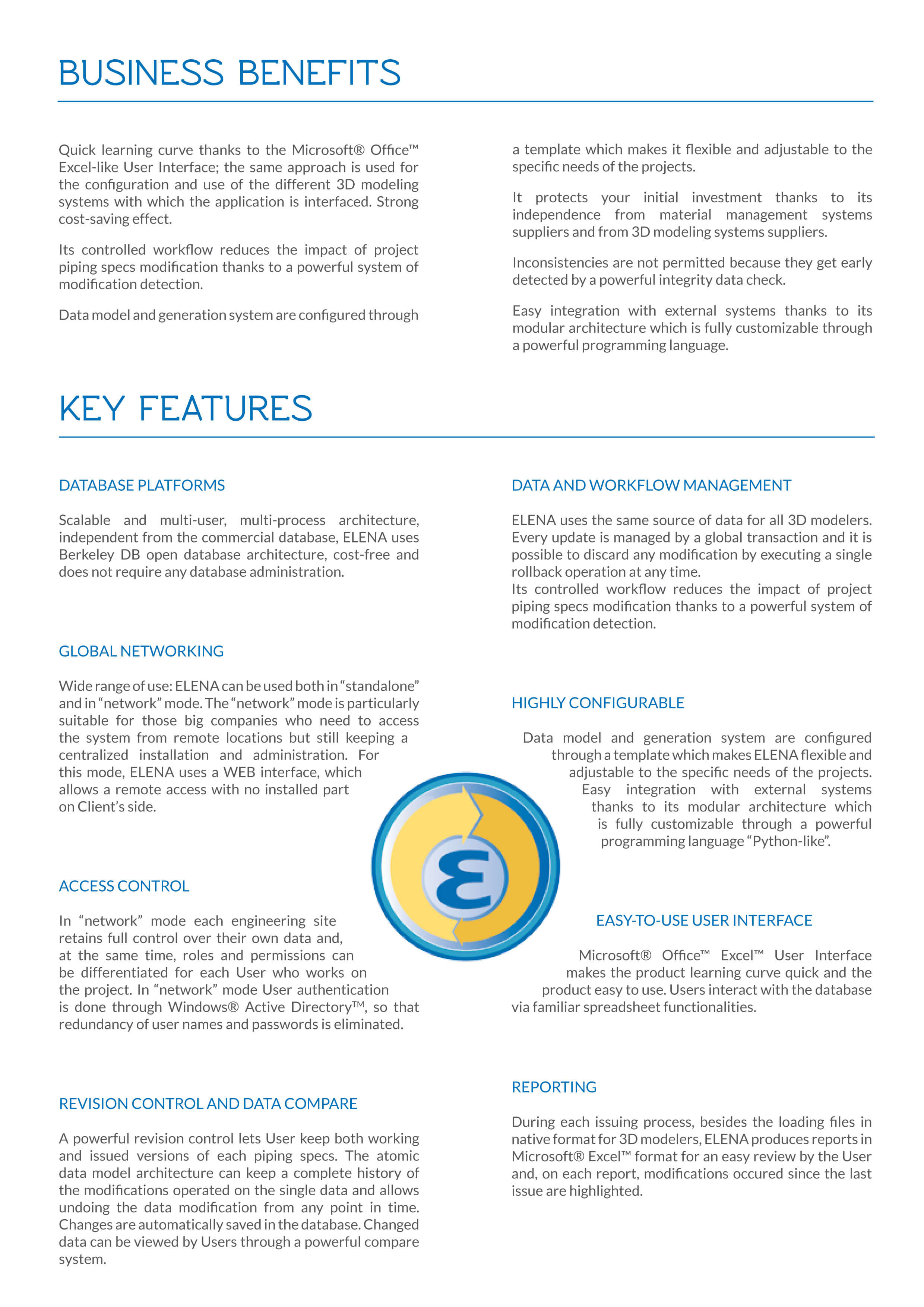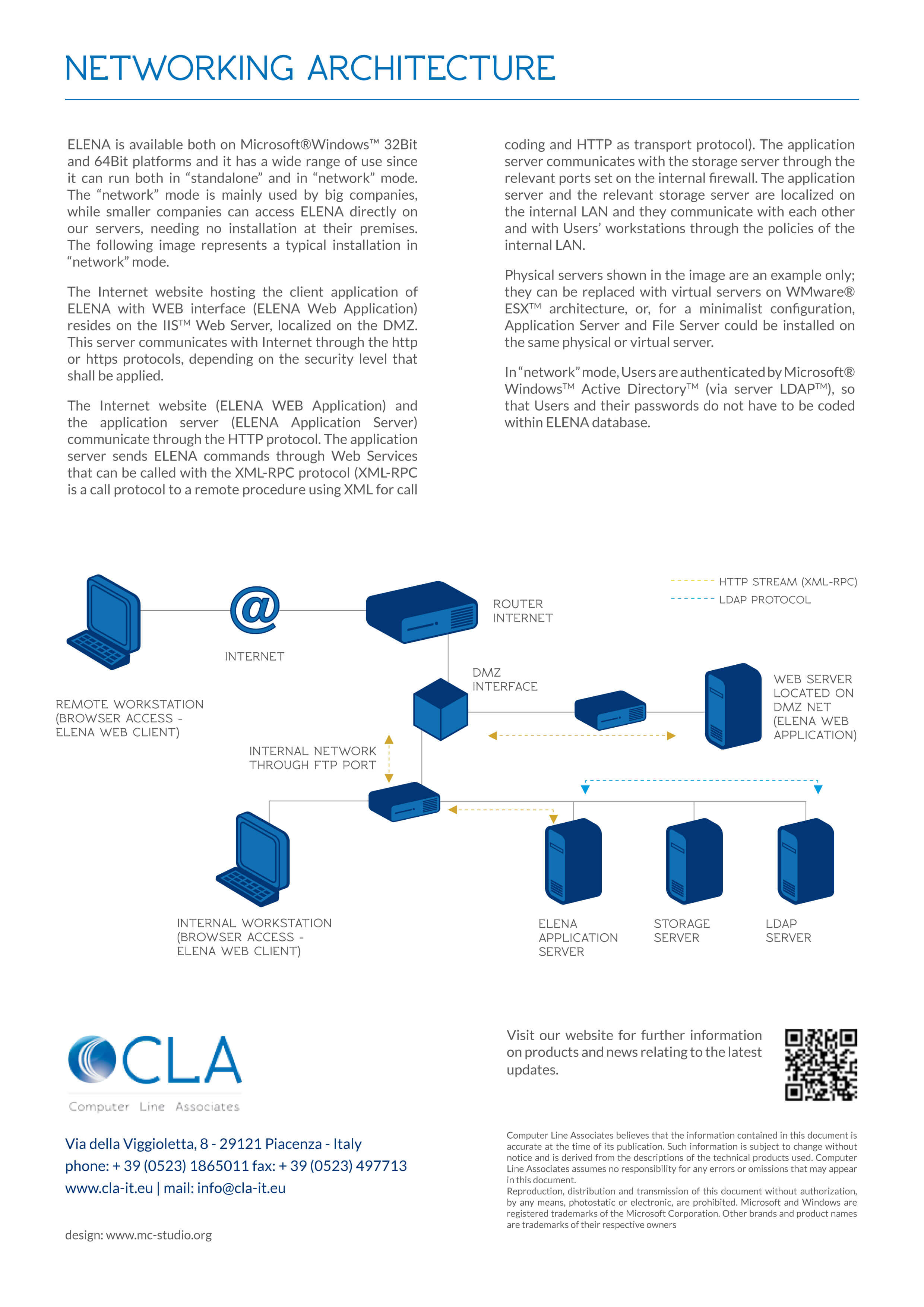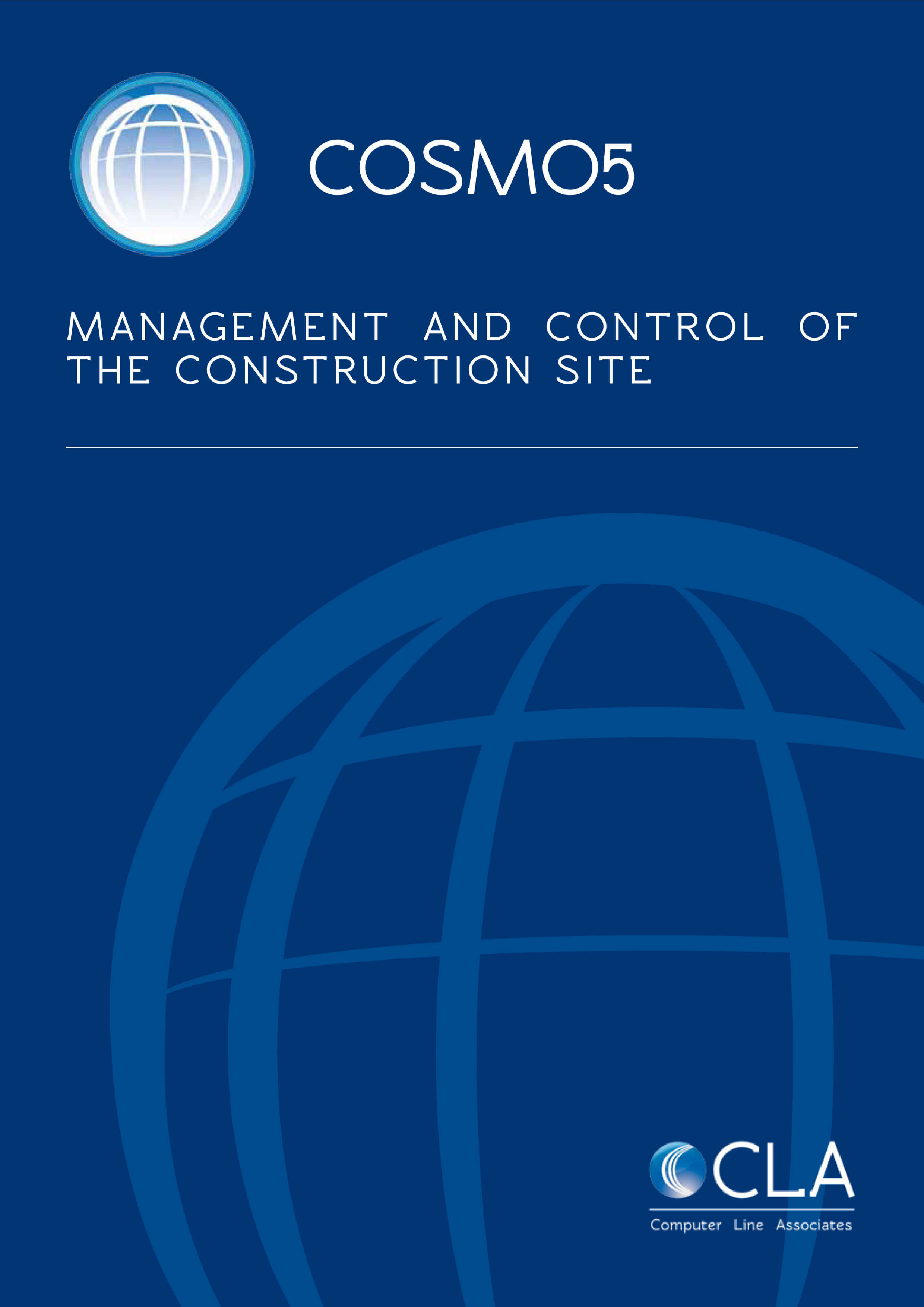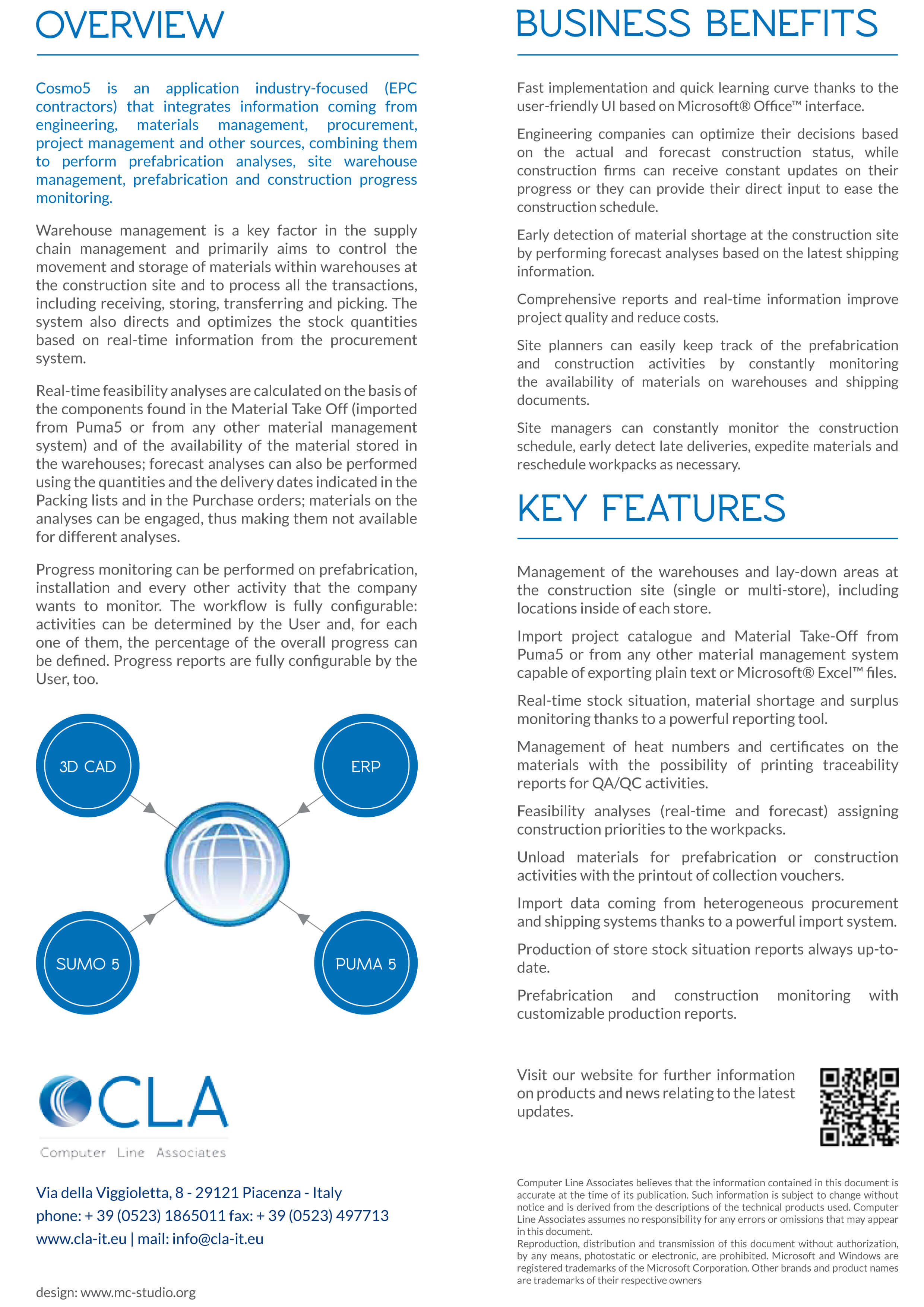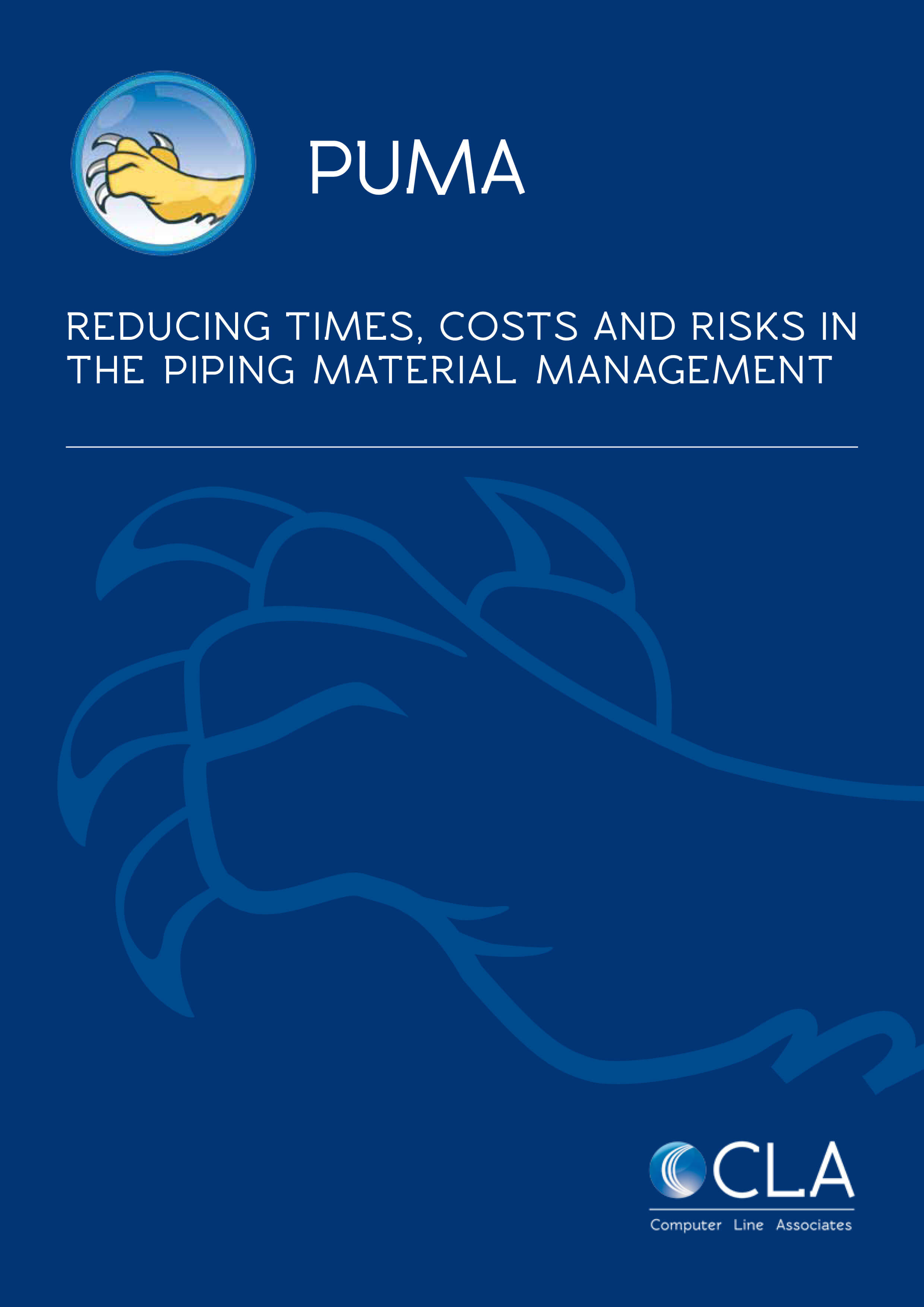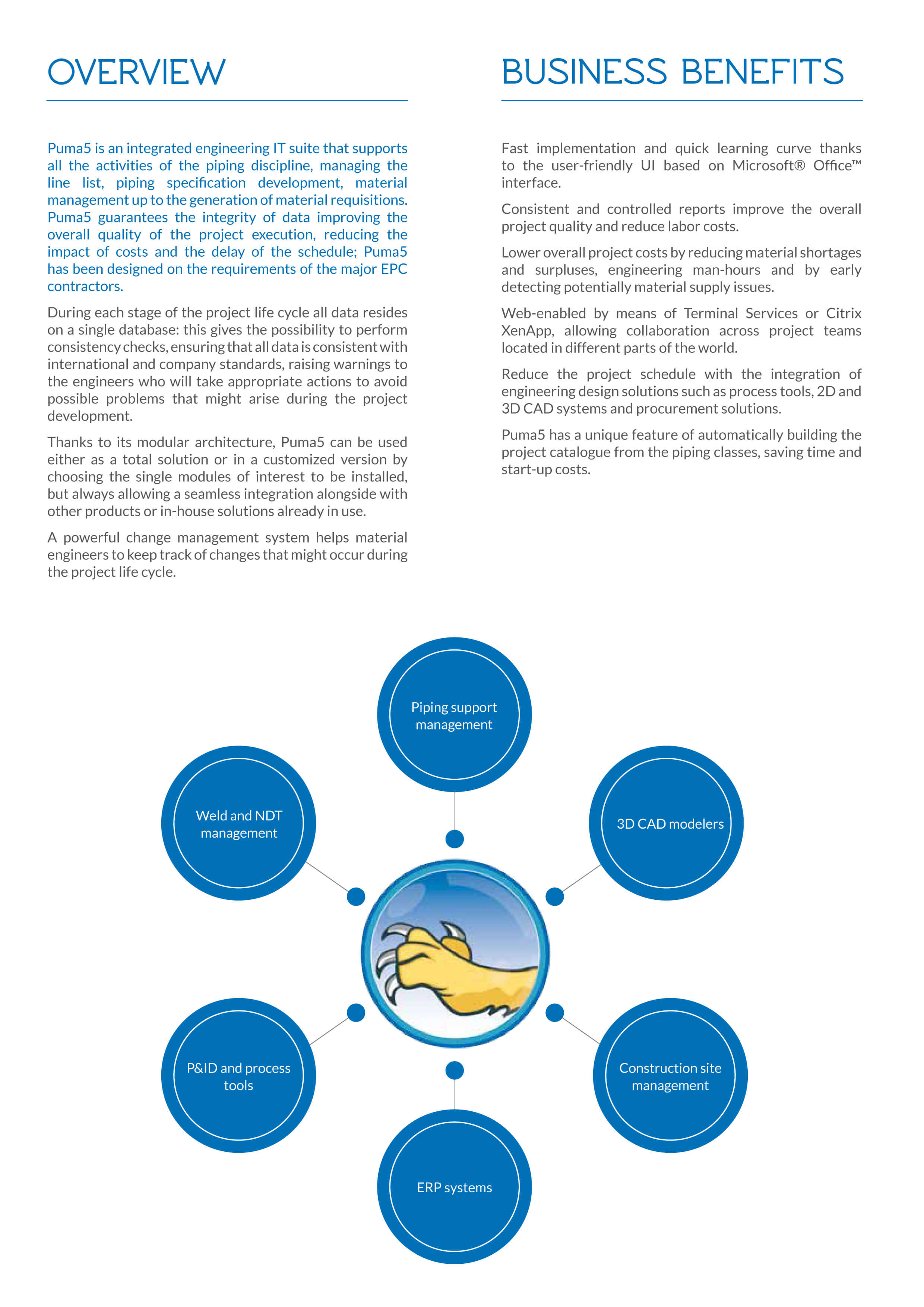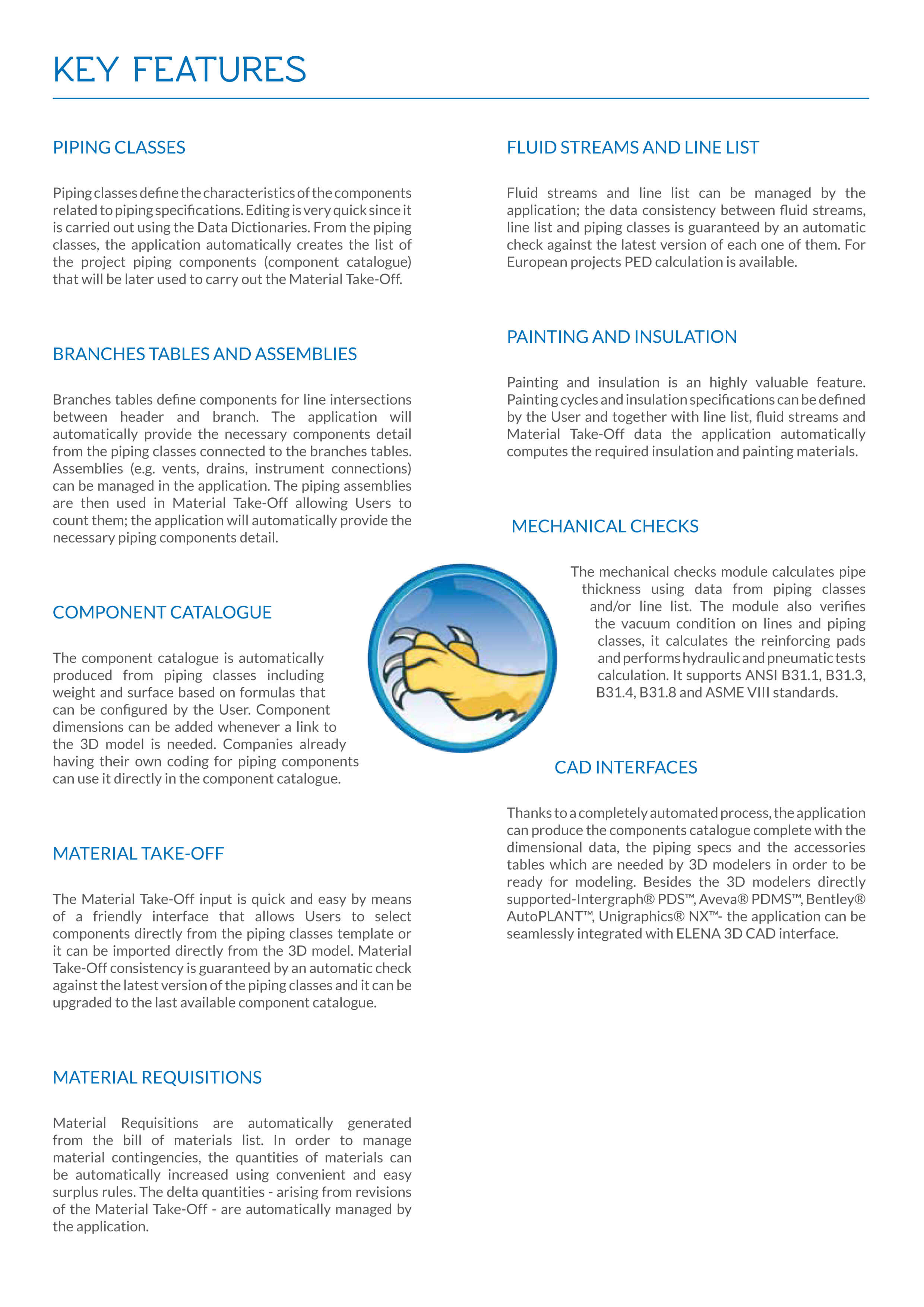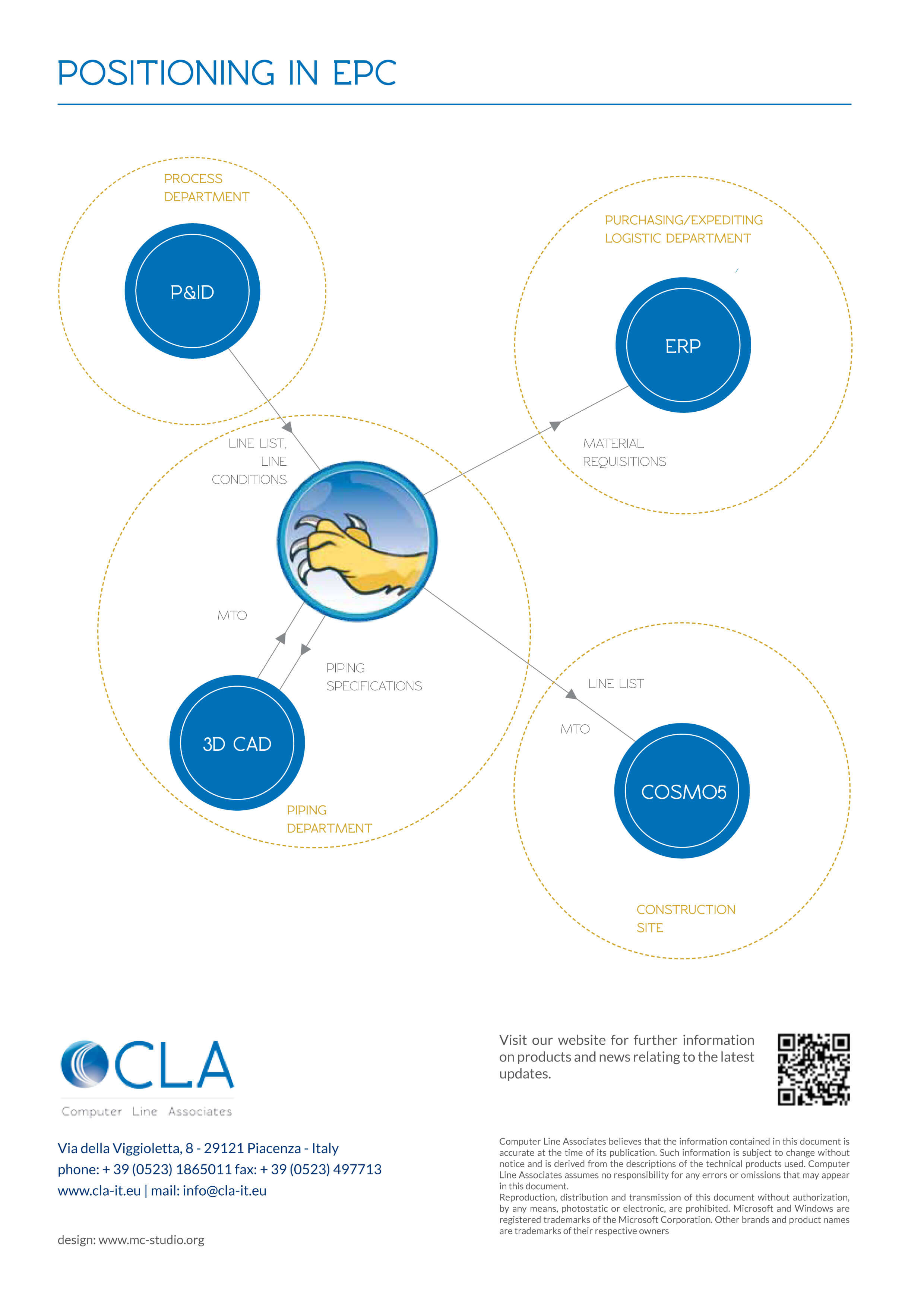Cosmo5, new release!
Cosmo5 has now reached the release No. 02.310.01.07 and here’s a quick recap of the latest improvements we’ve made to the software:
Exclusion analysis Criteria – it allows User to specify criteria for excluding components from an analysis. While running an analysis, if the exclusion criteria are specified, the analysis also shows the feasibility percentage that has been calculated excluding the components selected by exclusion criteria. By clicking the appropriate button for each analysis, User can view the list of components that will be excluded from the calculation.
Analysis criteria -In the form defining criteria for the Unit, Line and Area fields it is now possible to set the option “equal to”, “starting with” and “includes” to get more flexible filter options.
Export of engaged analysis – From the engage form User can now export the result of an engaged analysis as an Excel file. The result of the feasibility analysis calculation performed upon the analysis engage is exported. The same result, calculated by the analysis definition form before the engage, is shown.
Shipping situation – In the shipping situation form it is now possible to export as an Excel file the fulfillment status of each component relating to a purchase order or packing list, that has been received or ordered but not delivered. This report allows User to immediately intercept critical situations. There is also data related to estimated weight to be received, dia inch and so on.
In a second sheet, the same result is summarised by category of good.
Blocked spools by components not delivered – In the file exported in Excel format of a feasibility analysis, the following information relating to the number of spools that a component “blocks” has been added:
– total number of spools where the component is present;
– number of spools where the component is the only one missing;
– number of spools where the component is missing along with other components.
Weights and quantities of the spools are also indicated.
This report allows the User to speed up the shipping for items which “block” a lot of Isos.
ISO and Spool main size – In the ISO and Spools sections, information relating to the Main Size of each ISO and each Spool has been added. This information is calculated whenever the component list of an ISO or a Spool is changed.
This information is used as a filter on the criteria in feasibility analysis to identify, for example, Isos with big diameters.
Material transfer from catalog – Material can now be transferred by using the “from catalog” option. First of all it is necessary to specify the warehouse from which the material shall be withdrawn; the form shows the list of materials having stock > 0, that are in the selected Unload warehouse.
Analysis criteria duplication – In the Criteria form, the possibility of duplicating a criteria has been added. This will duplicate the policy header and all the details it contains.
Stock qty downloading from analysis – During the download from the analysis, the information showing from which store the goods are taken was added. The stock quantity of that item in the reference store is also shown.
For a complete overview of the new features of this Cosmo5 release, please log into our support portal and download the latest documentation.
Cosmo5 – what we’ve been up to
Cosmo5 has now reached the release No. 02.300.06.00 and here’s a quick recap of the latest improvements we’ve made to the software:
Erection phase management – we’ve introduced the erection phase management, which starts from the generation of the spool as a catalog item with calculated weight and dia-inch, so that it can be managed together with the erection material during warehouse handling and erection analyses.
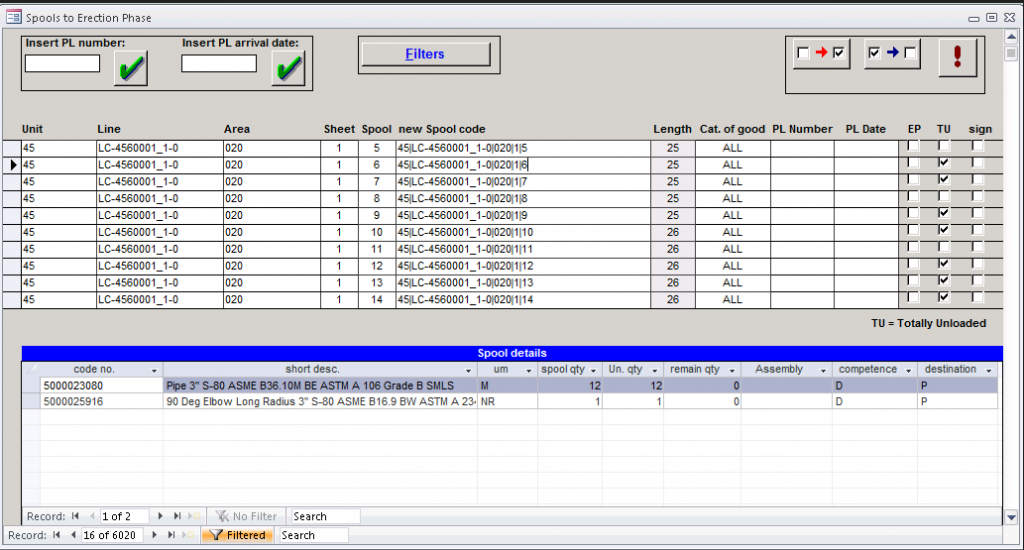
By using this management, prefabrication and field installation can be monitored; moreover, the assembled spools and the erection material can be checked for availability through time with real and forecast sketch analyses.
Many features and a “new” workflow have been delivered with this management, therefore, if you’re interested, please don’t hesitate to contact us and get more info about it.

Analysis criteria with priorities assigned – it is now possible to create and save criteria defining analyses that identify those spool packets which user wants to analyze. This avoids the import of the same spool series every time and it allows to set priorities based on the selected filter attributes. When a new MTO revision gets imported, a simple refresh of the selected analysis will automatically update the spools complying with the selected criteria based on the new MTO, without having to import the spool again.
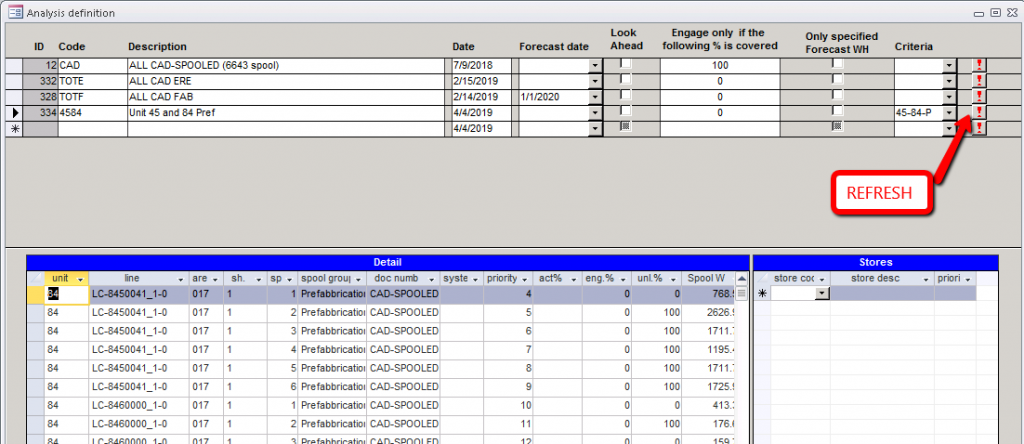
Load multiple PL/PO – simultaneous registration of different PL/PO in warehouse load events.

Fast insert for PO, PL and MR – PO, PL and MR can be imported from other systems with the “copy and paste” mode by using the “Fast Insert” button on each form; document forms have been reviewed to give more information to the user.

Import catalog, sketch MTO and Spool MTO by file – it is now possible to import, at every level, information that get Cosmo5 operational, from the component catalog to the spool MTO through Excel file.

It can be a step-by-step import with single files, or a one-file import (import ALL), that allows users to import all contexts in one transfer only. This last method is particularly useful, for example, when you need to import data into Cosmo5 from a MTO coming from CAD, so that you can simultaneously create both the codified catalog and the sketches/spools with the MTO detail.

Check difference by sketches – a report is now available showing differences between sketch and spool, by selecting the sketches that need to be verified. This function is generally used after a new isometrics import, to analyze differences between spools generated by the previous isometric revision.
Import loaded materials from other systems – events of warehouse loading (both from PL and from PO) can now be imported from other systems by using a dedicated function that checks the compatibility with project data.
Event History Query ALL – a report of all project events with the maximum detailed level (for event, component) is now available and it can also be exported to Excel; it is used to monitor the history of material handling during the entire project.
